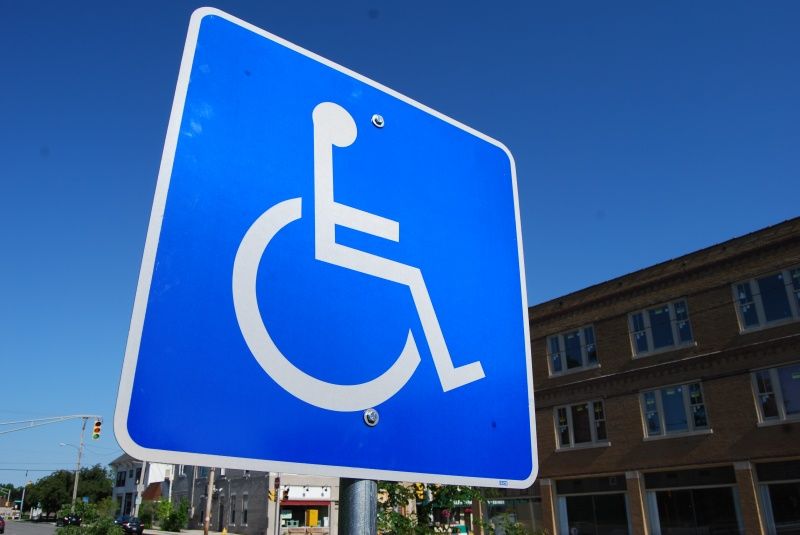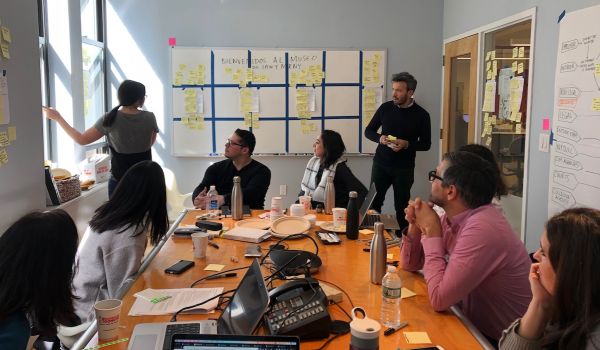Not that long ago, cities and buildings were designed without any consideration of the needs of disabled individuals. But as society has become more inclusive, gradual changes have been made in the way we design urban areas to make the more accessible to people with physical and mental impairments (think sidewalk curb cuts, low floor buses, and accessible bathrooms). Many of these changes were initially brought about through legislation, such as the 1990 Americans with Disabilities Act, but overtime these have been increasingly seen good practices for creating more healthy and inclusive places for people with and without disabilities.
The same storyline above could be applied to the Internet. With the explosive growth of the World Wide Web, many websites were created without consideration for how someone who can’t use a mouse or can’t see might experience it. As the Web has become a more integral part of modern life however, there has increasing awareness that websites are not always accessible to the increasing number of people with disabilities. And while getting web developers to make accessibility considerations remains somewhat of a challenge, by making the needed changes, websites become more user-friendly not just for people with disabilities, but for everyone.
On the legislation front, Congress amended Section 508 of the Rehabilitation Act in 1998, which prohibited federal agencies from discriminating on the basis of disability, to better address the use of information technology. The updated law required federal agencies (and organizations receiving federal funding) to provide disabled individuals with access to information comparable to the access available to others. Feeding into this legislation was the World Wide Web Consortium (W3C)‘s Web Accessibility Initiative (WAI), which was launched in 1997 with an endorsement from the White House.
While Section 508 lays out a number of good practices for making websites accessible, the web has changed a lot since 1999. Rich media websites and applications that make heavy use of videos, graphics and dynamic scripting are an increasing challenge to assistive technologies such as screen readers. And with little monitoring, its little wonder some federal agencies have made Section 508 compliance an afterthought.
Fortunately, things are beginning to change. In March, the federal government began the process of updating the Section 508 guidelines. The new updated rules, which are currently in draft form, bring the guidelines up to date with the WCAG 2.0 accessibility guidelines issued by the W3C in 2008 — which addresses many of the more advanced web technologies that have become widespead. In addition, the White House released a memo in July addressing the accessibility of federal websites, and announced that the General Services Administration and the Department of Justice would begin to review agency Section 508 compliance, as well as ask agencies to make regular reviews themselves.
All this is good news of course, and should result in more accessible government websites. Still, there’s a long way to go. Legal requirements for web accessibility still only exist for federal websites and those state and local governments that have adopted similar requirements (of which there are quite a few). Getting the millions of private websites that exist on the Internet to make changes is a tougher challenge, though progress has been made on challenging this status quo. One landmark example is the National Federation of the Blind’s 2008 lawsuit against big-box retailer Target for not making its website accessible for screen readers. Target ultimately settled, and agreed to improve the accessibility of its website.
So given the state of web accessibility, what should cities and local governments be doing? Plenty of resources exist for learning about good development practices that help also make websites accessible. Reviewing websites for compliance to Section 508 and WCAG 2.0 guidelines, and reaching out to disabled community groups are also good steps to follow. By taking these actions, governments have an opportunity to provide some technical leadership and encourage society as a whole to recognize the importance of providing access to everyone.
Open data and development practices can also play a role. An interesting case of this is the use of web application APIs by third-party developers to create accessible versions of a popular website — such as AccessibleTwitter. Using this model, city or organization that lacks the resources to make an existing application accessible might open up its data and enlist the help of the development community (as it has with web app contests) to get accessibility changes made faster.
















